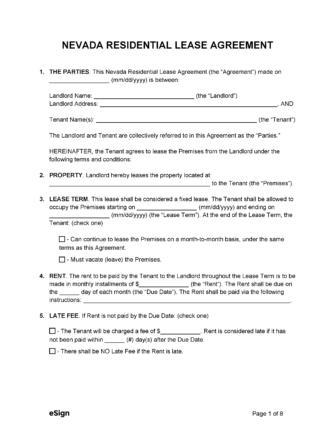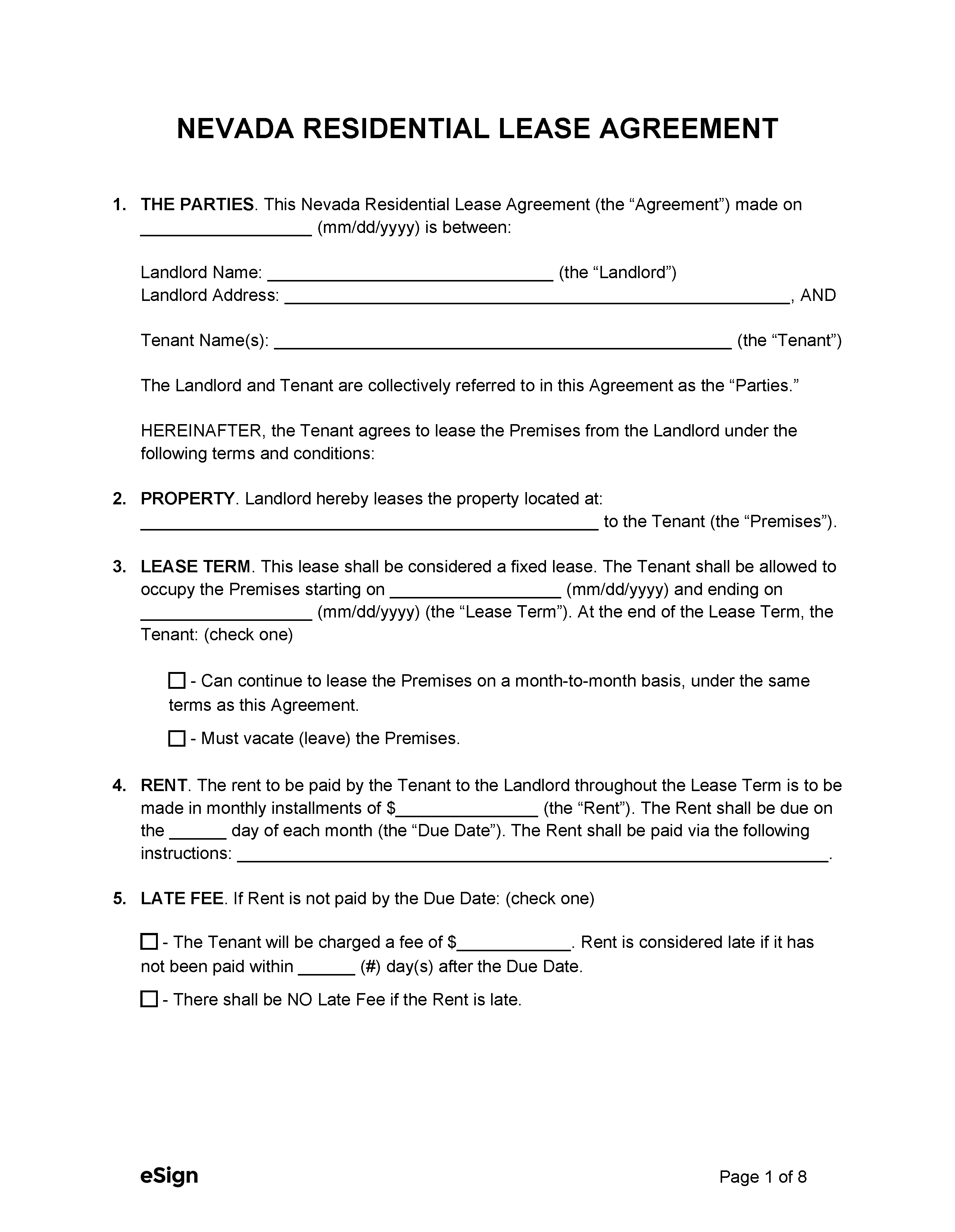Rental Application – A form used to collect and verify a rental applicant’s employment details and rental history.
Required Disclosures (3)
- Foreclosure – Any impending foreclosures must be disclosed to the tenant.[1]
- Inventory and Condition of Premises (PDF) – The landlord must provide the tenant with a signed report of the property’s inventory and condition.[2]
- Lead-Based Paint Disclosure (PDF) – Landlords must disclose that lead-based paint may have been used on the premises if built prior to 1978.[3]
Rent Grace Period
No rent grace period is mentioned in statutes; rent is due as stated in the lease.
Landlord Resources
- Landlord and Tenant: Dwellings – Title 10, Chapter 118A
- Handbook (Guide) – Nevada Landlord-Tenant Law

